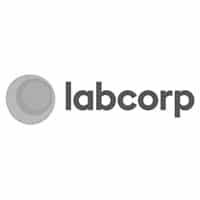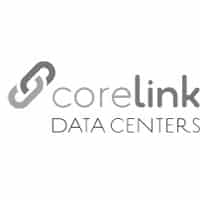 Hyperconvergence is not just a buzzword, it is the future of data center operations. First there were converged data centers and now there are hyperconverged data center infrastructures that address silos that previously posed a significant problem. With hyperconverged data centers, storage, compute, and network components are optimized for better collaboration that bypasses silos. Scaling infrastructure as needed is far easier to achieve with a hyperconverged data center. For this reason, data centers with their eyes on future needs and scalability must be focused on hyperconvergence.
Hyperconvergence is not just a buzzword, it is the future of data center operations. First there were converged data centers and now there are hyperconverged data center infrastructures that address silos that previously posed a significant problem. With hyperconverged data centers, storage, compute, and network components are optimized for better collaboration that bypasses silos. Scaling infrastructure as needed is far easier to achieve with a hyperconverged data center. For this reason, data centers with their eyes on future needs and scalability must be focused on hyperconvergence.
What is Hyperconvergence
Because technology and needs are constantly changing, data centers traditionally have a mixture of components and infrastructure. Though each component of infrastructure served its purpose, the components did not communicate well with each other, silos were created, and data center operations became more complex and over-wrought than necessary. BizTech expands on how hyperconvergence is changing data centers for the better, “ Gartner reports that by 2018 hyperconverged integrated systems will represent as much as 35 percent of total converged infrastructure shipments by revenue, up from a low-single-digit base in 2015…Hyperconverged solutions are clusters that typically leverage commodity components to support software-defined environments and related functions,” King observes. “Hyperconvergence delivers a radical simplification of the IT infrastructure,” says Jeff Ready, chief executive officer of Scale Computing, a virtualization and convergence provider. The approach consolidates all required functionality into a single infrastructure stack running on an efficient, elastic pool of processing resources, leading to a data center that is largely software-defined with tightly-integrated computing, storage, networking and virtualization resources. Hyperconvergence stands in contrast to a traditional converged infrastructure, where each of these resources is typically handled by a discrete component that serves only a single purpose. “Hyperconvergence takes the headache out of managing the infrastructure so that IT can focus on running the applications,” Ready says.”
For data center managers, hyperconverged infrastructure may sound like a major change, and maybe even overkill, but the majority of data centers making the switch, it is becoming the industry standard. And, as soon as data center managers implement hyperconverged infrastructure into their data centers, they quickly realize the resistance was not just futile but that they should have made the switch sooner! In fact, once hyperconvergence is integrated, configuration and deployment actually reduces headaches and streamlines operations.
Advantages of Hyperconvergences
 No data centers would be making the change to a hyperconverged infrastructure if it was without advantages. Fortunately, the advantages are many! Though the upfront cost may seem significant, the investment will more than pay for itself. One of the most significant advantages is scalability. Data centers technology and storage needs are constantly changing and growing. Many data centers are scrambling just to figure out how to not “outgrow” their current facility and infrastructure. With the old infrastructure, it is very, very difficult to do so. With each component or piece of infrastructure added, it may serve as a temporary Band-Aid but make no mistake; it is not a permanent solution. Hyperconverged infrastructure makes it far easier to scale. EdTech underscores just how beneficial it is to make it easy for data centers to scale storage and infrastructure, “For many institutions, a chief benefit of hyperconverged solutions is the high degree of scalability they offer, a benefit that has led some tech observers to compare hyperconvergence with the public cloud. “We can add nodes to the initial cluster and leverage all of those resources across the cluster,” Ferguson says. “I can add another node and add more storage. Or, if I really want a compute-focused piece, I can add a very compute-centric node. You can mix and match all of those.” Western Washington University deployed a Nutanix hyperconverged solution in 2015. Jon Junell, assistant director of enterprise infrastructure services at WWU, agrees that the ability to easily add capacity is a valuable time-saver. “A few clicks, and it sees the other nodes, and away you go,” he says. ‘The management gets out of the way, so you can go back to doing the true value-add work.’”
No data centers would be making the change to a hyperconverged infrastructure if it was without advantages. Fortunately, the advantages are many! Though the upfront cost may seem significant, the investment will more than pay for itself. One of the most significant advantages is scalability. Data centers technology and storage needs are constantly changing and growing. Many data centers are scrambling just to figure out how to not “outgrow” their current facility and infrastructure. With the old infrastructure, it is very, very difficult to do so. With each component or piece of infrastructure added, it may serve as a temporary Band-Aid but make no mistake; it is not a permanent solution. Hyperconverged infrastructure makes it far easier to scale. EdTech underscores just how beneficial it is to make it easy for data centers to scale storage and infrastructure, “For many institutions, a chief benefit of hyperconverged solutions is the high degree of scalability they offer, a benefit that has led some tech observers to compare hyperconvergence with the public cloud. “We can add nodes to the initial cluster and leverage all of those resources across the cluster,” Ferguson says. “I can add another node and add more storage. Or, if I really want a compute-focused piece, I can add a very compute-centric node. You can mix and match all of those.” Western Washington University deployed a Nutanix hyperconverged solution in 2015. Jon Junell, assistant director of enterprise infrastructure services at WWU, agrees that the ability to easily add capacity is a valuable time-saver. “A few clicks, and it sees the other nodes, and away you go,” he says. ‘The management gets out of the way, so you can go back to doing the true value-add work.’”
In addition to scalability, another advantage is the ability to have everything under one umbrella. Because everything is in “one box” it means that interoperability is a breeze. Without hyperconverged infrastructure, components not only have a harder time working together but it dramatically increases the potential that something will break down or go wrong. With hyperconverged infrastructure, this is not the case. Having everything streamlined will reduce operating costs and dramatically improve data center management through ease of operation.
Further, a major advantage of hyperconvergence is how easy it is to deploy. As mentioned, many data center managers may bristle at the implementation of something so significant and new but deployment really is outstandingly easy. Rather than trying to connect and communicate with multiple subsystems, there are hyperconverged options that are literally “plug and play.” This means that they come in a single box and can literally be deployed by plugging everything in and going. And, the plug and play doesn’t stop there. Adding storage is as simple as plugging more in. The amount of time and money that would typically take to deploy or expand infrastructure is dramatically decreased and significantly streamlined by hyperconvergence.
Different Hyperconvergence Solutions
Hyperconvergence is being deployed in different ways depending on data center size and specific needs. There are different hyperconvergence solutions to meet needs and each solution can be used in a variety of ways and then scaled as needed. Data Center Knowledge takes a closer look at how data centers are using hyperconverged infrastructure, “Today, it’s used primarily to deploy general-purpose workloads, virtual desktop infrastructure, analytics (Hadoop clusters for example), and for remote or branch office workloads. In fewer cases, companies use it to run mission critical applications, server virtualization, or high-performance storage. In yet fewer instances, hyperconverged infrastructure underlies private or hybrid cloud or those agile environments that support rapid software-release cycles.” Though this may be the case for now, industry experts believe that this will change as more and more data centers adopt hyperconverged infrastructure.
 Though there are similarities between converged data centers and hyperconverged data centers, there are some important differences. While both converged critical resources and allow data centers to increase density, they are managed in a very different way. Hyperconverged infrastructure employs one important difference that is a significant game changer for data centers – everything is managed virtually which makes cloud setup easy and reduces the complexity of systems for a more streamlined and efficient management of operations. No data center hyperconvergence solution is necessarily “better” than another, but there are certain solutions that are better suited to your specific data center. There are a variety of data center hyperconvergence solutions and Data Center Knowledge emphasizes the importance of choosing carefully for your unique needs, “Still, make sure you do your research and know which hyperconverged infrastructure technology you’re deploying. Each hyperconverged infrastructure system is unique and has its benefits and drawbacks. For example, make sure your hyperconverged infrastructure system doesn’t only work with one hypervisor. A converged system that only supports a single hypervisor, such as VMware vSphere, unnecessarily locks an organization into a single vendor and associated polices, including licensing fees and migration complexities. Similarly, if you deploy a hyperconverged infrastructure solution which comes with in-line deduplication and compression enabled (and you can’t turn it off), you need to make sure the workloads you host on that infrastructure can work well in that kind of environment.”
Though there are similarities between converged data centers and hyperconverged data centers, there are some important differences. While both converged critical resources and allow data centers to increase density, they are managed in a very different way. Hyperconverged infrastructure employs one important difference that is a significant game changer for data centers – everything is managed virtually which makes cloud setup easy and reduces the complexity of systems for a more streamlined and efficient management of operations. No data center hyperconvergence solution is necessarily “better” than another, but there are certain solutions that are better suited to your specific data center. There are a variety of data center hyperconvergence solutions and Data Center Knowledge emphasizes the importance of choosing carefully for your unique needs, “Still, make sure you do your research and know which hyperconverged infrastructure technology you’re deploying. Each hyperconverged infrastructure system is unique and has its benefits and drawbacks. For example, make sure your hyperconverged infrastructure system doesn’t only work with one hypervisor. A converged system that only supports a single hypervisor, such as VMware vSphere, unnecessarily locks an organization into a single vendor and associated polices, including licensing fees and migration complexities. Similarly, if you deploy a hyperconverged infrastructure solution which comes with in-line deduplication and compression enabled (and you can’t turn it off), you need to make sure the workloads you host on that infrastructure can work well in that kind of environment.”
Hyperconvergence is not just a compelling notion. By all industry expert predictions, it is the future of data centers. A hyperconverged infrastructure is not just something that is beneficial for massive data centers from Yahoo or Apple; hyperconvergence infrastructure works for data centers of all sizes. Not only does hyperconvergence change how data centers can scale and streamline operations management, but it also increases profit and return on investment by increasing capabilities and decreasing waste. For small to mid-size organizations, it is a cost-effective and efficient way to leverage IT investments and get the most bang for your buck in the long term. The way size and volume of data, and how it is used is a clear indication that easy scalability is not a luxury but a necessity. Hyperconvergence will make growing and changing data needs manageable and improve overall data center operations going forward.




























